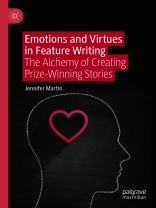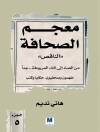This book provides an important and original way of understanding how journalists use emotion to communicate to readers, posing the deceptively simple question, ‘how do journalists make us feel something when we read their work?’. Martin uses case-studies of award-winning magazine-style features to illuminate how some of the best writers of literary journalism give readers the gift of experiencing a range of perspectives and emotions in the telling of a single story. Part One of this book discusses the origins and development of narrative journalism and introduces a new theoretical framework, the Virtue Paradigm, and a new textual analysis tool, the Virtue Map. Part Two includes three case-studies of prize-winning journalism, demonstrating how the Virtue Paradigm and the Virtue Map provide fresh insight into narrative journalism and the ongoing conversation of what it means to live well together in community.
Spis treści
Part I. Theory.- 1. Why We Need a Map.- 2. Navigating Narrative Journalism: Blurred Boundaries and
Uncertain Beginnings.- 3. The Virtue Paradigm: The Feature and Democracy.- 4. The Virtue Paradigm: A New Framework.- 5. The Virtue Map: The Walkley Project.- 6. The Virtue Map: Emotions and Virtues.- Part II. Case Studies.- 7. Children: A Case Study.- 8. Disadvantaged or Socially Marginalized: A Case Study.- 9. Citizen, Nation, World: A Case Study.- 10. Conclusion.
O autorze
Dr Jennifer Martin, Lecturer in communication at Deakin University in Melbourne, Australia, has been teaching journalism for the past decade. She has more than 25 years’ experience working as a journalist and is a past winner of the United Nations Association of Australia Media Peace Prize.












